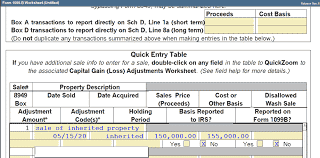While the same company can handle both loan origination and mortgage servicing, the two services are fundamentally different. Handling loans is a complex process that necessitates comprehensive servicing from the moment a borrower considers a mortgage to the date the last payment is received.
To ensure a smooth process for all parties involved, lenders have diverse teams working on loan origination and loan servicing. In this post we’ll learn more about the mortgage loan origination process and the fee associated with it.
What is Loan Origination?
In real estate, loan origination refers to the process by which a buyer obtains a mortgage loan from a bank or other lender. Loan origination frequently entails gathering and analyzing appropriate or relevant client data in order to make a loan decision.
Did you know that the loan origination process varies depending on the loan type? For example, the process of originating a mortgage loan differs significantly from that of originating a personal loan.
Loan Origination Examples
Example 1: The origination of a personal loan
Example 2: The origination of a mortgage loan
How Does the Loan Origination Process Work?
An applicant begins the loan origination process by submitting documentation and data to the lender. This information may be less detailed for a small secured loan versus a large loan, but credit history, income and assets, and information about how the loan will be used will all be considered.
Most lenders will then take all of the necessary documentation and enter the key data into an automated underwriting software product, or an underwriter will manually determine the loan limits for which the borrower qualifies.
The lender’s representative will go over potential terms and interest rates with the borrower, as they may qualify for a lower rate on a longer-term loan or if the loan is fixed-rate versus adjustable-rate. If the terms are acceptable, they can agree to proceed with the loan.
All of this effort is rewarded with a fee that is included in the loan. A typical mortgage origination fee for a home loan is 0.5% to 1% of the loan amount.
Note: Because each lender must include it in your loan estimate, you will know the amount of your origination fee ahead of time. Only in exceptional circumstances can origination fees be raised.
What Does This Mean for First-Time Homebuyers?
Even if first-time homebuyers and others are on the verge of qualifying for a mortgage, loans can still be originated even if they do not initially qualify for a conventional loan.
There are several government loan products available, including VA, FHA, and USDA loans, which may be suitable for some buyers. If this is the case, the origination process can assist you in determining it.
A loan with a special circumstance may necessitate additional documentation. When you submit these documents to your loan officer, they will consult with the underwriting team to see if there is a loan product that is a good fit for you.
Loan Origination Requirements
While other paperwork may be required depending on the loan product being originated, many lenders will use the following to start the process in earnest:
- Tax returns and other forms of income documentation, such as W2s and 1099s
- Bank statements and other assets and expense documentation
- Credit history
- Photo ID for identity verification.
- If applicable, information about co-signers
If you qualify for a specific type of loan, you may be required to provide additional documentation, such as proof of military affiliation for a VA loan or information about the property’s location for USDA loans.
Steps Involved in the Mortgage Loan Origination Process
#1. Preapproval
If you are qualified for a mortgage, you will first receive a preapproval from a lender. A preapproval is not a firm commitment to lend, but it does show what you’re likely to get if you meet all of the underwriting requirements and your financial circumstances do not change significantly between the preapproval and the closing. You will provide specific financial documents to your lender during this stage of the loan origination process, as well as undergo a credit check, so the lender can determine if you are a creditworthy borrower. Among these documents are:
- Pay stubs from recent jobs
- Last two years’ income tax returns and W-2s (or, if self-employed, business records such as profit and loss statements)
- Bank account statements from the last few months
- Information on investments
- Passport or driver’s license
With all of this information, the lender can make an educated guess about how much house you can afford and how much mortgage you may qualify for.
#2. Application for a Loan
Along with a preapproval, you’ll need to fill out an application for the specific loan type you want, which will necessitate a thorough examination of your finances and the home you’re buying, including:
- Any outstanding debts, such as student loans and credit cards
- Your work history and earnings
- Bank accounts, stocks, and retirement funds are examples of assets.
- The size of the down payment you intend to make and where it will come from (such as a gift, inheritance or savings)
- The kind of property are you buying.
After submitting your application, you will receive a loan estimate, which is a document that details all of the estimated costs of the loan you applied for. These fees are quoted upfront by lenders so that borrowers can compare offers. You will receive the loan estimate within three days of applying, or possibly immediately.
There may also be a one-time application fee, depending on your lender.
#3. Underwriting and loan processing
During loan processing and underwriting, the lender and underwriters evaluate your information, also known as your risk profile, to determine how large of a mortgage you can handle and repay on time. To make a decision about lending you a mortgage, the lender evaluates information using a software program, manually, or both. At this point, the lender can approve or deny the loan, or request additional information. Don’t be surprised if you receive a request for additional information; this is quite common.
#4. Closing
When your mortgage application is approved and underwriting is completed, you will receive a final commitment letter for the loan. The closing is the next step. You’ll sign paperwork agreeing to the loan terms and the property transfer at the closing, and you’ll get the keys to your new home. You’ll also have to pay closing costs, which may include an origination fee if your lender charges one. Other fees may apply, such as an underwriting fee or documentation preparation fee, as well as title insurance and attorney fees.
Closing costs and fees are classified into three types:
- Some may not change.
- Some may go as high as 10%.
- Under certain conditions, some may go up indefinitely.
A revised loan estimate will be provided if allowable changes occur.
You can negotiate closing costs in a variety of ways, including asking your lender for a discount, asking the seller to contribute, or rolling the costs into your loan (which can save you money upfront, but can cost you more over the life of the loan).
How to Make a Mortgage Loan Application
The mortgage loan origination process can be time-consuming and stressful, so planning ahead of time is essential.
#1. Examine your credit report
Before you apply for a mortgage (or even seriously consider purchasing a home), make sure your credit score meets minimum requirements and your credit report is error-free. The higher your score, the better your options and the lower your interest rate.
Repair what needs to be repaired and raise your credit score where possible by paying down debt and avoiding taking on more. Avoid late payments on rent, credit cards, student loans, or car loans, and try to keep the same job if at all possible, as stability is important in the eyes of a lender.
#2. Determine the type of mortgage you need
Know the differences between conventional and USDA loans and which one best fits your finances and situation, especially where you are in your life or family cycle. For example, how likely are you to refinance or stay in your home in five or seven years?
#3. Compare offers from various lenders.
Finding the best lender for your situation is critical for your budget. Speak with at least three mortgage lenders, beginning with your own bank to see what kind of relationship programs it provides. Inquire with your friends, family, and real estate agent about who they would recommend. It is important to note that there are various types of lenders: national banks, community banks, credit unions, mortgage brokers, mortgage bankers, and online lenders. Each state also has a housing finance agency, which generally works with all types of lenders and may be a good place to start.
What Is Fraudulent Loan Origination?
Any type of loan activity, including loan origination, can invite fraud and fraudulent behavior from any of the people involved. Fraudulent loan origination refers to actions taken to obtain loan funds for someone who is not qualified to receive one. This can occur in any of the following ways:
- Borrower Fraud: A borrower may submit false information on an application.
- Lender Fraud: A lender can knowingly approve a loan that does not meet the lender’s own standards; this would almost certainly involve falsifying some information.
- Fraud by Both the Lender and the Borrower: Both the lender and the borrower can conspire to obtain loan funds fraudulently. In fact, all parties to a large loan transaction can work together to commit fraud in loan origination.
Different Methods of Mortgage Loan Origination Fraud
The following are some of the methods used to commit mortgage loan origination fraud:
#1. Inflated Appraisals:
Inflated appraisals have long been used to commit fraud in mortgage lending transactions. Appraisal fraud occurs when an appraiser assigns a much higher value to a property than standard appraisal methods can justify. One strategy is to use inappropriate and not true comparables to justify a higher value for a property than is warranted. An appraiser will typically commit this type of fraud in collaboration with a seller, buyer, mortgage lender, or all three at the same time.
#2. Straw Buyers:
A straw buyer is someone who accepts payment in exchange for the use of their name, social security number, and other personal information on a mortgage application. The straw buyer appears to be the person applying for a mortgage loan and the person who intends to live in the home.
In reality, the straw buyer has no intention of ever owning or possessing the property used to secure the loan. The straw buyer may abandon the transaction, possibly unaware that they are committing fraud. The fraudulent scheme’s participants may pocket the majority of the money obtained through the loan, while the property used to secure the loan may go into foreclosure.
#3. Straw Sellers:
A straw seller is someone who accepts payment to falsely claim ownership of a property that is being sold. Co-conspirators with the straw seller may falsify title documents, including forged warranty deeds, in order to support their claims.
The straw seller makes a false claim that he owns and occupies the property that will be used as security for the loan. Closings where the property is transferred to straw buyers may include straw sellers. The loan funds are stolen by the perpetrators of the fraud.
#4. Air Loans:
An air loan occurs when all aspects of the loan transaction are fictitious, including the property, the buyer, and the seller. Fraudsters may even use fictitious employers, appraisals, and credit reports as loan application verifications.
Identity theft occurs when someone obtains access to another person’s name, social security number, driver’s license number, and other personal information in order to obtain credit, i.e. obtain loans or make purchases. The victim of identity theft is unaware that another person has stolen their identity and is using it to obtain credit in their name. Some identity thieves are skilled enough to forge pay stubs, tax returns, and bank statements, as well as false driver’s licenses and Social Security cards.
One of the most common types of fraudulent loan origination is when a lender assists a borrower in obtaining approval for specific types of federal loans, housing, or benefits.
All of these activities are in violation of state and federal criminal laws. Anyone involved may receive a criminal conviction and face time in jail or prison as well as hefty fines. Victims who want to recoup their losses may sue them in civil court. Any type of fraud in connection with a loan application is illegal. When a person applies for credit of any kind, especially a mortgage loan, they want to be as truthful as possible.
Do I Need an Attorney to Handle Loan Origination Issues?
Loan origination can be difficult, especially when applying for a mortgage loan. It can take a long time and necessitate the creation of numerous documents. If you need assistance with loan origination issues, you may need to hire a mortgage lawyer. Your attorney, for example, can assist you in reviewing and negotiating loan terms.
Alternatively, if you believe a lender is not treating you fairly and on the same basis as all other potential borrowers, you may require the services of a mortgage lawyer. If you have any legal issues, your lawyer can help you represent yourself in court if you need to file a lawsuit.
Origination of Loan FAQs
What is an example of a loan originator?
Two of the most common forms of mortgage originators are mortgage bankers and mortgage brokers. While the titles sound identical, there are significant differences between the two.
What are loan origination activities?
Loan origination operations encompass all financial and non-financial steps required to ensure that the portfolio of pre-qualifications and applications is handled and serviced in accordance with all applicable governing laws as well as departmental policies, procedures, and regulations.
What happens after loan origination?
Loan servicing occurs after loan origination. The service phase comprises all procedures until the borrower completely repays the loan.
Related Articles
- MORTGAGE ORIGINATION FEE: What You Should Know
- Refinancing A Car Loan: Best Easy 2022 Guide & All You Should Know
- Refinancing Home Loan: Rates, Costs and All You Need
- MORTGAGE LOAN ORIGINATOR: What They Do & How To Become One
- Mortgage Brokers: How do Mortgage Brokers Make Money in the US (Updated)






